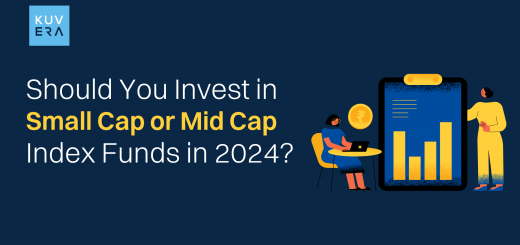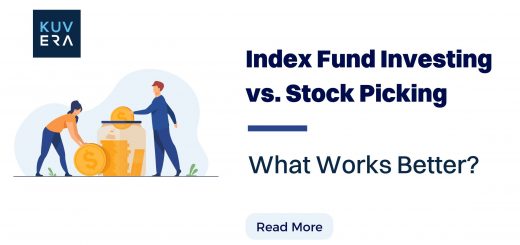Mutual Fund investments have been rapidly increasing recently. Among new investors, the phrase “diversification” is often tossed about. When it comes to investing, diversification is critical.
What Is Mutual Fund Diversification?
Diversification is the process of investing in a wide range of assets. Diversification is also provided through mutual funds. This feature helps investor to avoid putting all of their eggs in one basket by investing in numerous assets to minimise risk. The funds can be invested in many types of Mutual Funds, namely Equity Mutual Funds (investment in large-cap, mid-cap, and small-cap stocks), Debt Mutual Funds (investment in government securities and other low-risk assets), and Hybrid Mutual Funds (investment in equities and debt instruments).
What Are The Advantages Of A Diversified Mutual Fund Portfolio?
The key advantage of diversifying your assets is that you lower your risk. By investing in numerous funds, the risk is spread; if one item underperforms, the other instruments balance it out, minimising the loss and may create profit in the end.
However, this feature has additional advantages. Which are as follows:
- Investing in various instruments (equities, bonds, and many more)
- Investing in many sectors.
- Avoids investing in assets that have a high level of correlation.
- Investing in numerous areas.
- Achieving long-term financial objectives.
- Gaining knowledge about several asset classes.
The benefits listed above clearly demonstrate how the feature of mutual fund diversification helps investors and makes mutual funds an essential type of investment.
Over Diversification /Of Mutual Funds:
Investors must have a diverse portfolio, or a well-balanced assortment of stocks and other investments spread across unrelated industries. This is so that the total volatility of the investor’s portfolio and the risk of permanent loss are both decreased by the combination of such assets.
There can, however, be too much diversity. Over-diversification occurs when each incremental investment added to a portfolio lowers the expected return to a greater degree than the associated reduction in the risk profile, this is known as over-diversification. An investor might, in a sense, hold so many investments that, rather than diversifying their portfolio, they have participated in a little “di-worsification,” where their portfolio is worse off since there is no extra advantage to the incremental stocks owned over a certain level.
What Degree Of Diversification Is Excessive?
There is no clear line that separates a portfolio that is sufficiently diversified from one that is over-diverse. Most investors would consider a portfolio that has 20 to 30 investments spread across multiple stock market sectors to be appropriately diversified. Others, particularly those who like riskier growth firms, advocate retaining a bigger number of stocks. To avoid, for instance, choosing the incorrect stock that underperforms its rivals while being accurate about the assumption that the sector will rebound or expand at an above-average pace, some investors use a basket strategy to invest in comparable firms in an industry.
Over-diversity is more of a result of spreading a portfolio too thin by making investments in less confident concepts for the sake of diversification than it is an absolute amount. For instance, not every investor has to hold tobacco or oil companies in order to maintain a diverse portfolio, especially if doing so would go against their moral principles. Similarly to this, having more than 100 stocks might make it challenging for an investor to manage their portfolio, which may lead them to maintain losing stocks for an excessively long time.
What Risks Could Over-Diversification Pose?
The primary risk of excessive diversity is that it can lower portfolio returns without significantly lowering risk. The total risk profile of a portfolio may decrease with each additional investment added. These new additions simultaneously may lower the projected return on the portfolio.
An investor may eventually reach a point with their assets where the advantage of risk reduction from each new addition is less than the decline in anticipated returns. Therefore, increasing that investment may not result in any more benefits. Since there is no incremental advantage, it would be preferable to replace a concept with lesser conviction with this new one rather than adding it to the portfolio.
Over-diversification also poses the risk of diverting an investor’s attention from their most enthusiastic investment concepts. To keep up to date with all their possessions, they will need to devote part of their time. This may lead individuals to place too much emphasis on unsuccessful investments and not enough on profitable ones. Instead of filtering out weak ideas that don’t provide additional value, it would be wiser to foster the successful ones and fund those initiatives.
What Factors Should You Take Into Account While Building Your Investment Portfolio?
Investors must make wise investment decisions if they want to maintain their portfolio’s health or profitability. To manage their assets, they might also enlist the assistance of financial experts. To make sure they are building a solid portfolio, investors may take into account the following actions.
- Decide On A Fund Category
The choice of the fund category an investor wishes to invest in is the first step in building a portfolio. Investors currently have a variety of alternatives to select from, including debt funds, equity funds, hybrid funds, ELSS funds, etc. Since this is the first step in making an investment, the investor must carefully consider and comprehend it.
- Choose The Category’s Top Funds
The next step is to choose the appropriate funds within the previously chosen category. The investor’s appetite for risk, expectations for returns, cost of investing, investment purpose, etc., may play a role in choosing the best funds. If you have the desire, you might additionally focus on certain technical aspects like the Alpha & Beta created by the funds.
Make sure that the underlying assets of the funds are different. Additionally, investors must watch out for overlapping assets in the funds they have chosen from the necessary categories. To properly benefit from diversification, these funds should own a variety of significant assets.
- Do Not Overdo It
While having adequate resources to invest in is crucial, it’s also critical that the investor understands when to exercise restraint. Over-diversification may make the portfolio unfavourable over time, as well as being burdensome and expensive for the investor.
How Can Your Portfolio Be Diversified?
Here are some tips for portfolio diversification:
- Having 10 to 20 investments in a portfolio is advised, according to industry experts. To prevent unsystematic risk, these stocks have to be unique.
- These Investments should be scattered throughout several industries for optimum diversification. You can invest in equities that come from various industries and should not be correlated with one another. These sectors ought to exhibit various patterns throughout time.
- A person’s total portfolio should diversify among other asset classes in addition to diverse industries, which entails allocating a particular amount to bonds, commodities, real estate, alternative assets, and so forth.
How Many Mutual Funds Should I Own?
Given the diversity of mutual fund options, it is sensible to break out each type individually.
- Large-Cap Equity Mutual Funds
Mutual funds that invest in large-cap equity only buy shares of large-cap firms i.e top 100 companies ranked based on their market cap. A second large-cap mutual fund is not necessarily essential, but it can be a choice because your assets will be sufficiently diversified by one that is well-researched and picked. Owning many large cap funds does not necessarily result in a more diverse portfolio; rather, it raises the likelihood that there will be considerable overlap in the shares that these funds own.
- Mid-cap Equity Mutual Funds
Mid-cap equity mutual funds spread their holdings among companies with medium-sized capitalizations i.e companies rankings from 101 to 250 in terms of market capitalization. Compared to businesses that fall within the large capital spectrum, these businesses have a significantly better potential for growth. However, there may also be a noticeable increase in risk when using mid-cap mutual funds.
Mid-cap companies are far more prevalent than large-cap ones. As a result, there is less likelihood that your assets would significantly overlap even if you invest in many mid-cap mutual funds. As a result, you have more investment alternatives. However, you should only invest in mid-cap funds after carefully researching them and being confident in their future prospects.
Although the high potential return may make these funds more appealing, keep in mind that they also carry a greater risk, which, if things don’t work out, might be bad for your entire portfolio.
- Small-Cap Mutual Funds
Small-cap mutual funds invest in small-cap companies i.e companies that are ranked from the 251st position onwards in terms of market cap. It’s a high-risk, high-reward method to invest in them. If they succeed, you might make exceptionally large profits; however, if they fail, you risk losing a significant portion of your initial investment. Since there are fewer companies in this category, it is less likely that your investments would overlap, therefore the risks involved are more of a motivator to keep your portfolio to no more than two of them. Once more, only make small cap investments after conducting extensive research.
- Debt Mutual Funds
Debt mutual funds distribute your money across bonds and other comparable market products. Because they are typically regarded as risk-free and safe investments as compared to equity mutual funds, the returns have also been historically modest. You could certainly invest in one or two of them as well, but doing so may result in lower total results.
- Sectoral Mutual Funds
Sectoral Mutual Funds distribute your money to businesses in a certain industry. This is quite similar to solely investing in one firm since your investment in that company may suffer if the industry as a whole has a slump. These funds are only a wise choice if you have extensive knowledge of or are an authority in that particular field. Your investment strategy will vary depending on how many sectors of mutual funds you are familiar with. It is better to avoid investing in funds or industries if you are unsure about them.
The general consensus is that you should invest in somewhere between 6-10 mutual funds, however, there is no specific number that works for everyone. Depending on a variety of factors, including your risk tolerance, expected returns, and familiarity with specific sectors, you may invest more or less. Always make sure the funds you invest in are of different types, as opposed to funds with different names but comparable results. As usual, before making any financial decisions, always conduct in-depth research and speak with your financial advisor.
Why You Should Invest In Multiple Mutual Funds To Mitigate Portfolio Risk?
- Mitigates the Effects Of Market Volatility
Risks can be reduced to a minimum by maintaining a well-balanced portfolio. When money is spread out over several stocks, bonds, and other investment vehicles, it reduces the overall effect of market volatility. When investments are spread out among many funds, the dangers associated with any one sector or company can be mitigated. It lessens risky and may increase long-term profits.
- Helps Cut Down On Portfolio Monitoring Time
If you have a varied portfolio, not all of your holdings will suffer losses at the same time, making your portfolio more stable. If you’ve put all of your money into stocks. You need to spend a lot of time monitoring the market and planning your next move. Similarly, if you’ve just put money into safe mutual funds, you’ll always be looking for ways to boost your returns. With a diversified portfolio, you’ll spend less time worrying about the market and less time managing your investments.
- Assists In Exploring A Variety Of Investing Options
Mutual funds provide investors with the potential benefit of diversifying their portfolios across both debt and equity. As an analogy, fixed deposits offer the same stable return and low risk to investors. Because of the varying levels of risk and reward involved with various investments, it is essential to spread your money around in a diversified portfolio. If you have many funds, the gains from one might help offset any losses from another.
- Contributes To The Realization Of Investment Goals Over The Long Term
Investor has to spread their money around to other high-performing industries. To the extent that market volatility boosts the value of equities, the investor will reap the benefits in the form of increased profits. Mutual funds can be optimally utilised if the effect on debt is favourable.
- Facilitates Taking Advantage Of Compound Interest
Investors may take advantage of compound interest by choosing a mutual fund as their investment vehicle. This implies that not only will the principal amount of each investment earn interest, but so will the interest accrued on the principal amount during the years of the investment. It is essential to remember that diversification only makes sense if the fund holdings of the various schemes in which you invest are distinct from one another.
- Helps Keep The Capital Safe
Those seeking a safe investment opportunity may be disappointed to learn that not all financiers are willing to take chances. New investors or those nearing retirement value safety above everything else, and diversity provides that security. By spreading their money out among a variety of assets, investors may reduce their overall exposure to risk and yet get the benefits of their investing strategies. It’s also a way to reduce risk in the face of the market’s inherent uncertainty.
- Allows You To Quickly And eEasily Switch Between Several Investments
Every investor should take advantage of diversification because of its usefulness. Investors might rebalance their portfolios to take advantage of price fluctuations. With this strategy, investors may boost their yearly returns by increasing the diversification of their portfolios across several asset classes.
- Provides Reassurance
Diversification’s primary benefit is the assurance it provides. Spreading the risk of a large investment over a variety of asset types might help investors relax about their financial future.
Allotting your money through mutual funds gives you access to a wide range of investment opportunities, including stocks, bonds, and commodities. This broadens potential income streams with low risk.
FAQs
-
What Is The Optimum Quantity Of Mutual Funds That Should Be Included In A Portfolio?
The amount of funds in a portfolio is not predetermined or optimum. However, many experts think that for the ordinary investor, having 6–10 funds that cover several categories is optimum.
-
What’s The Operation Of Diversified Mutual Funds?
A diversified mutual fund is a type of investment vehicle that invests in several asset classes independent of market capitalization and industry. A diversified fund’s principal objective is to increase returns while lowering overall systemic and unstructured risk.
-
Can Over-diversification Lead To Greater Returns?
No. Over-diversification may not necessarily yield superior returns for the investor due to the potential erosion of portfolio profits caused by rising investment costs.
Interested in how we think about the markets?
Read more: Zen And The Art Of Investing
Watch/hear on YouTube:
Start investing through a platform that brings goal planning and investing to your fingertips. Visit Kuvera.in to discover Direct Plans and Fixed Deposits and start investing today.











